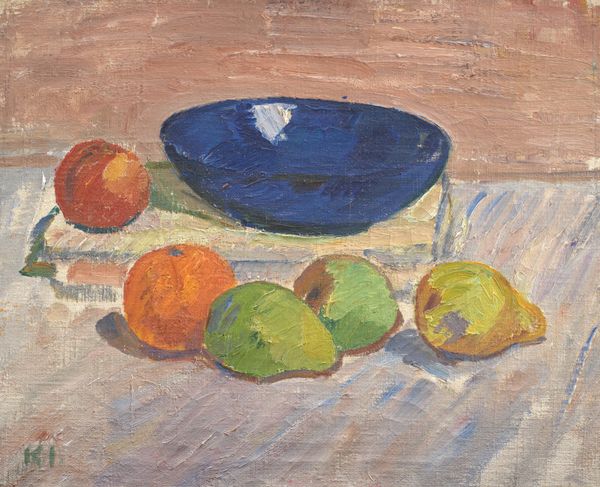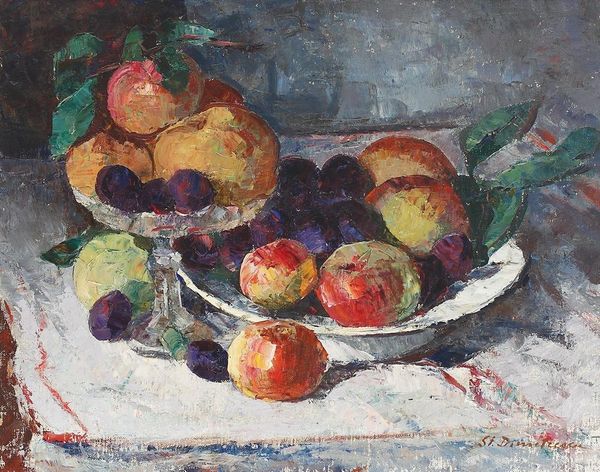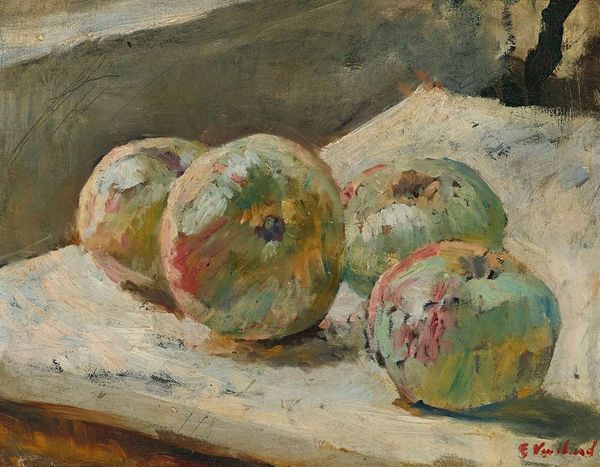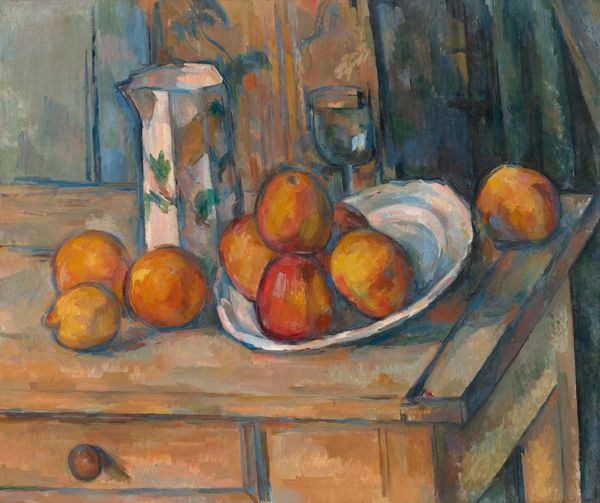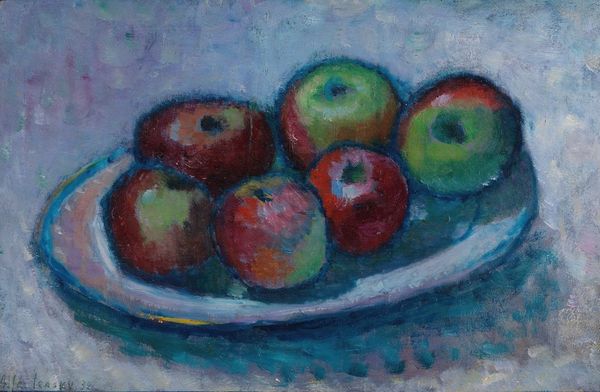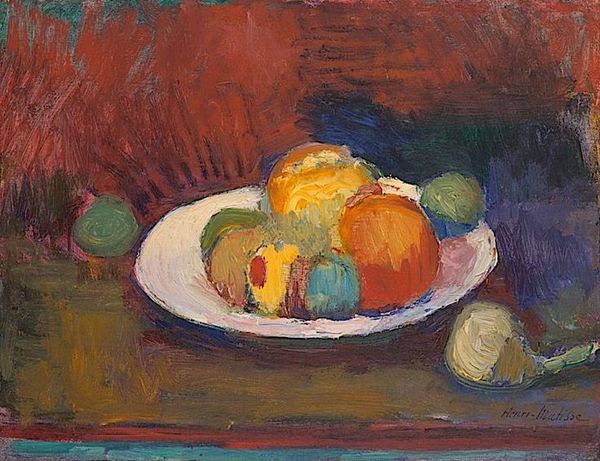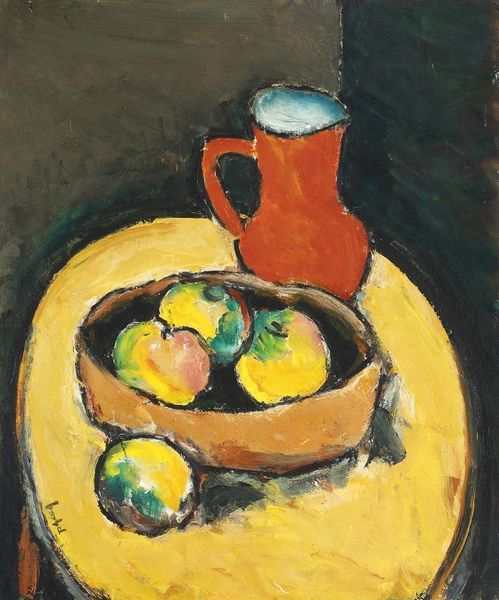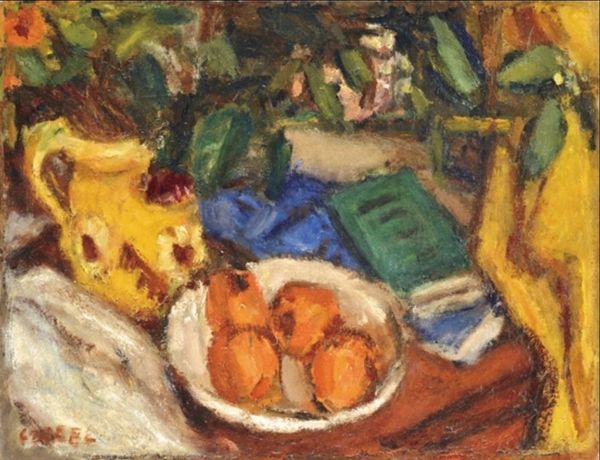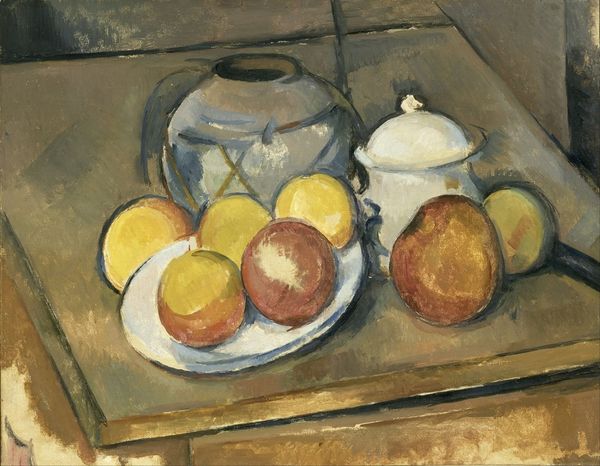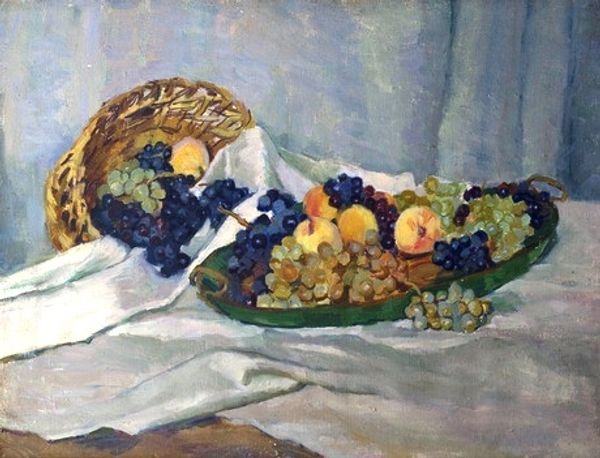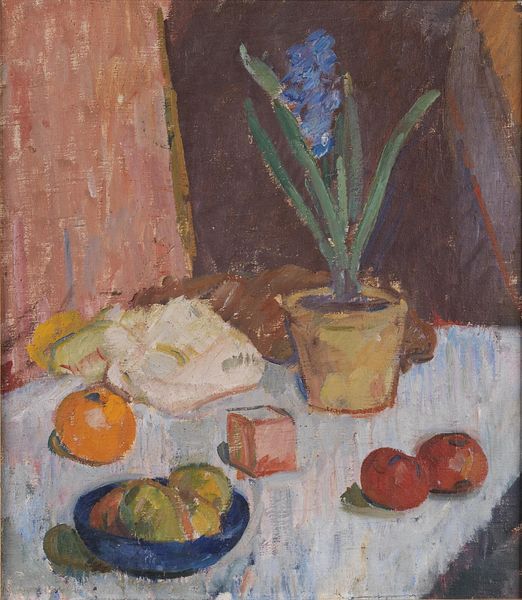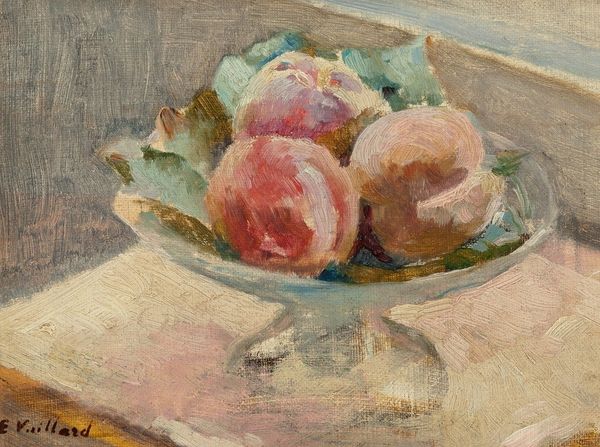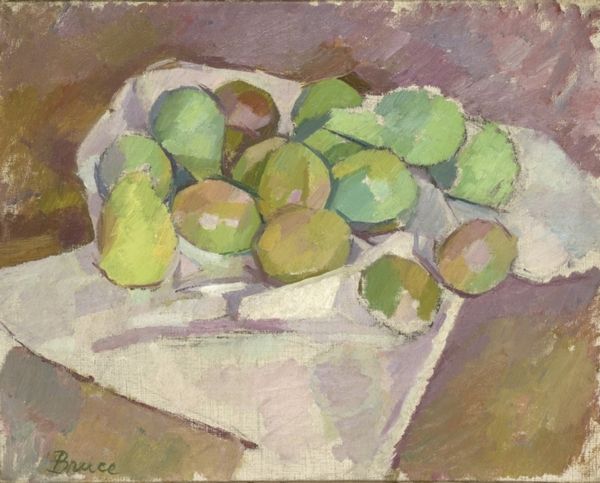
Copyright: Public Domain: Artvee
Paul Cézanne painted "The Plate of Apples," a still life, using oil on canvas sometime in the late 19th century. The painting presents a seemingly simple subject: a bowl of fruit. However, Cézanne’s approach to color, form, and composition destabilizes traditional notions of perspective and representation. Cézanne's use of color is striking. He employs varied brushstrokes to build volume and depth. The apples are not merely red or green; they are composed of many hues, giving them a vibrant, tactile quality. This technique reflects Cézanne's broader goal to capture the underlying structure of his subjects, reducing nature to its basic forms. The composition further challenges conventional perspective. The tabletop seems tilted, creating a sense of instability. This subversion of traditional perspective aligns with Cézanne's aim to represent the world as perceived, rather than as it is known to exist geometrically. Ultimately, "The Plate of Apples" is less about the apples themselves and more about Cézanne's innovative exploration of form and perception. It invites us to reconsider how we see, understand, and represent the world around us.
Comments
No comments
Be the first to comment and join the conversation on the ultimate creative platform.
